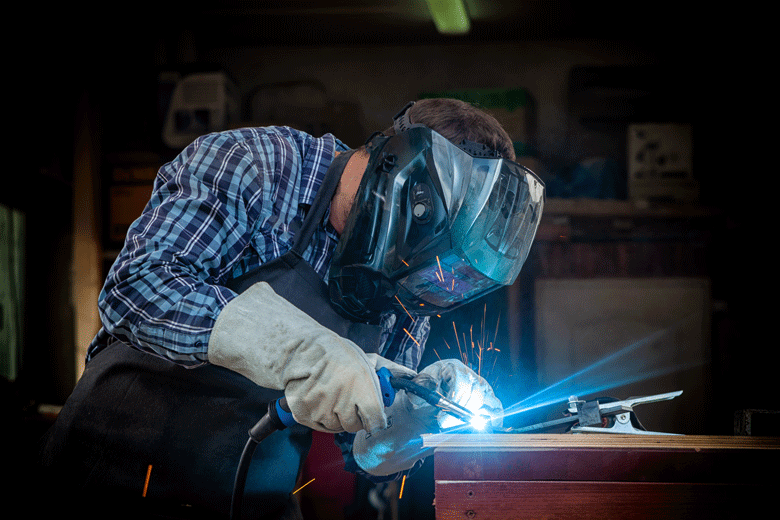

Every year, industries that employ welding, such as the construction sector, lose billions of dollars due to inefficiencies caused by welders.
Industries such as shipbuilding are losing an average of $3,000 a year per welder due to poor quality welding, rework and costs of related delays.
Due to the difficulty of welding jobs, there is less interest among newer generations in choosing this profession as a career. A shortage of 400,000 welders is predicted in the US by 2024, with a similar trend being observed across many industrial vocations.
Dangerous intensity
Most of the welding processes such as arc welding and gas tungsten arc welding generate a very bright light. The intensity of the generated light in these processes is so high it can damage human eyes, so welders have to use protective equipment to protect their body, especially their eyes and face. Apart from the intensity, the ultraviolet and infrared portions of the generated light can seriously damage human eyes. In general, welding is considered one of the most difficult jobs among all professions.
As of now, welders use helmets that employ very old technology – basically a dark shade that blocks the light and protects the welder’s eyes at the same time. Although the shade blocks the bright light, it also significantly reduces the light in the surrounding area. Due to this reason, welders cannot see the welding area very clearly and they have to rely on their muscle memory, making welding a very difficult job to perform.
Welding is also considered one of the most dangerous occupations due to the likelihood of workplace injury. Traditional helmets do not sufficiently protect welders, leading to 21 per cent of industrial eye injuries stemming from welding, including flash burns and loss of vision.
Nytilus is a Canadian technology start-up that develops augmented reality (AR) technologies and solutions for industrial and consumer applications. One of the technologies it has developed is a welding helmet powered by mixed-reality technology.
Quality work
Nytilus’ AR technology can enable welders to see the welding point and its surrounding areas clearly with all the details that will help them produce quality work. At the same time, by providing them with augmenting information such as torch speed and torch angle, welders can improve weld quality further and those with less experience can weld at a professional level without relying much on muscle memory.
Nytilus’ technology has been tested in laboratories and some workshops. But the solution is expensive and needs more support from the industry to succeed.
Some of the biggest challenges for our technology in the Middle East include labourers who work for cheap wages, their low level of education, which leaves them open to exploitation, and their unfamiliarity with new technologies. These challenges make it difficult to introduce products based on new technologies such as AR and virtual reality in the market.
About the authors
Abi Ghafari and Debanga Raj Neog are the co-founders of Nytilus
You might also like...

TotalEnergies to acquire remaining 50% SapuraOMV stake
26 April 2024

Hyundai E&C breaks ground on Jafurah gas project
26 April 2024

Abu Dhabi signs air taxi deals
26 April 2024

Spanish developer to invest in Saudi housing
26 April 2024
A MEED Subscription...
Subscribe or upgrade your current MEED.com package to support your strategic planning with the MENA region’s best source of business information. Proceed to our online shop below to find out more about the features in each package.





